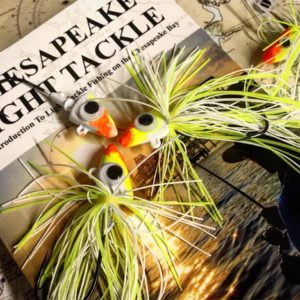 Have you noticed all the creativity in lure making for Chesapeake Bay rockfish lately? The artistry that is going into decorating the lead jig heads that we use while fishing with light tackle is simply amazing. I’m a big fan of the lures these guys and girls are turning out. I was going through some old papers last week when I happened upon the documents I used in 2008 to file for a trademark on the name “Candy Corn Jigs.” It wasn’t a big deal. My thinking was that someday I might want to make and sell lures and it seemed like a cool name for my favorite combination of colors for catching rockfish. That got me thinking about the history of color-contrasting lures and how far we’ve come in the last ten years. In fishing, as with many things, you can get a better understanding of where we’re going when you look back at where we’ve been. Believe it or not, in 2009 you could get a pretty good argument about whether rockfish jigs should even be painted. One light tackle guide from Southern Maryland was fond of saying, “When people ask me what my favorite color is for jig heads, I say lead.” If jigs were painted at all, they were usually only one single color: either red, chartreuse, or white. Fast forward to almost 2018, and we’re seeing all manner of colors and color combinations on the jig heads we use to catch rockfish with light tackle on the Bay. I think we’re all better anglers for it.
Have you noticed all the creativity in lure making for Chesapeake Bay rockfish lately? The artistry that is going into decorating the lead jig heads that we use while fishing with light tackle is simply amazing. I’m a big fan of the lures these guys and girls are turning out. I was going through some old papers last week when I happened upon the documents I used in 2008 to file for a trademark on the name “Candy Corn Jigs.” It wasn’t a big deal. My thinking was that someday I might want to make and sell lures and it seemed like a cool name for my favorite combination of colors for catching rockfish. That got me thinking about the history of color-contrasting lures and how far we’ve come in the last ten years. In fishing, as with many things, you can get a better understanding of where we’re going when you look back at where we’ve been. Believe it or not, in 2009 you could get a pretty good argument about whether rockfish jigs should even be painted. One light tackle guide from Southern Maryland was fond of saying, “When people ask me what my favorite color is for jig heads, I say lead.” If jigs were painted at all, they were usually only one single color: either red, chartreuse, or white. Fast forward to almost 2018, and we’re seeing all manner of colors and color combinations on the jig heads we use to catch rockfish with light tackle on the Bay. I think we’re all better anglers for it.
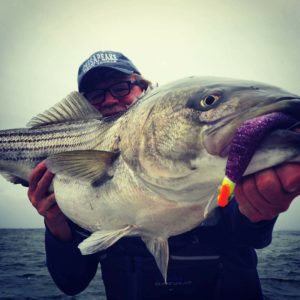 When I moved to this area in 2006, I brought all my bass fishing lures and equipment with me. After I figured out that my fresh-water gear was just as well suited for catching big rockfish as anything, I began to wonder why there weren’t as many contrasting colors in rockfish lures as there are in bass fishing lures. When I realized that in many respects, especially in areas like taste, smell, and vision, a striped bass is very similar to a black bass, I started color contrasting my jigs.
When I moved to this area in 2006, I brought all my bass fishing lures and equipment with me. After I figured out that my fresh-water gear was just as well suited for catching big rockfish as anything, I began to wonder why there weren’t as many contrasting colors in rockfish lures as there are in bass fishing lures. When I realized that in many respects, especially in areas like taste, smell, and vision, a striped bass is very similar to a black bass, I started color contrasting my jigs.
During the first decade of the 21st century, the Chesapeake Bay fishing community discovered the internet. I’ve written about this in my books. During this time, fishing reports quickly moved away from newspapers, magazines, and bait shop newsletters to 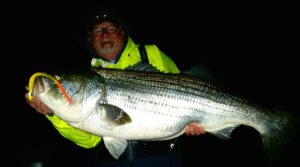 internet listservs. The most popular and influential discussion website for Chesapeake Bay anglers was called “Tidal Fish.” The original Chesapeake Angler message board was a place to read fishing reports and meet other anglers, but it was also a medium for verbose discussions about lures and techniques. There were some fantastic fishermen participating. When the talk inevitably came around to lure colors, I waded in offering observations about the importance of color contrasts, big eyes, scents, and the other principles I had picked up from a lifetime of fishing on the TVA lakes in Tennessee. Some anglers agreed, especially the guys with bass fishing experience, but many were skeptical. I guess a lot of people thought my burble about strike triggers, hot rod plastics, and flicker fusion frequency was nuts, but eventually enough fishermen tried my recommendations to find out that they work very well for rockfish. Here’s an example of a conversation from 2009:
internet listservs. The most popular and influential discussion website for Chesapeake Bay anglers was called “Tidal Fish.” The original Chesapeake Angler message board was a place to read fishing reports and meet other anglers, but it was also a medium for verbose discussions about lures and techniques. There were some fantastic fishermen participating. When the talk inevitably came around to lure colors, I waded in offering observations about the importance of color contrasts, big eyes, scents, and the other principles I had picked up from a lifetime of fishing on the TVA lakes in Tennessee. Some anglers agreed, especially the guys with bass fishing experience, but many were skeptical. I guess a lot of people thought my burble about strike triggers, hot rod plastics, and flicker fusion frequency was nuts, but eventually enough fishermen tried my recommendations to find out that they work very well for rockfish. Here’s an example of a conversation from 2009:
So, where did the candy corn (Kandy Korn) thing come from? It all started in Rich “Coach” Jenkins’ workshop right after he and I started fishing together. Rich has fished all his life, but at that time he hadn’t done much light tackle casting. He caught on fast, and even helped me refine what I now call the “strike triggers” concept before it had a name! One windy Sunday afternoon, Rich invited me and another fishing buddy, Mike “I want a green jacket” Robertson over to pour some lead lures. Even though I’ve been making my own bass and crappie jigs all my life, I had never poured rockfish jigs before. We all pitched in with lead, hooks, molds, etc. and turned out a hundred or so jigs. At one point, the discussion turned to strike triggers. Rich had all his powder paint open and started experimenting with color contrasts. Not to be outdone, I started triple dipping the hot lead to see what I could come up with. When I layered the three colors stripers see best, orange, chartreuse, and white on the triangular shad-style heads, it looked like a piece of candy corn.
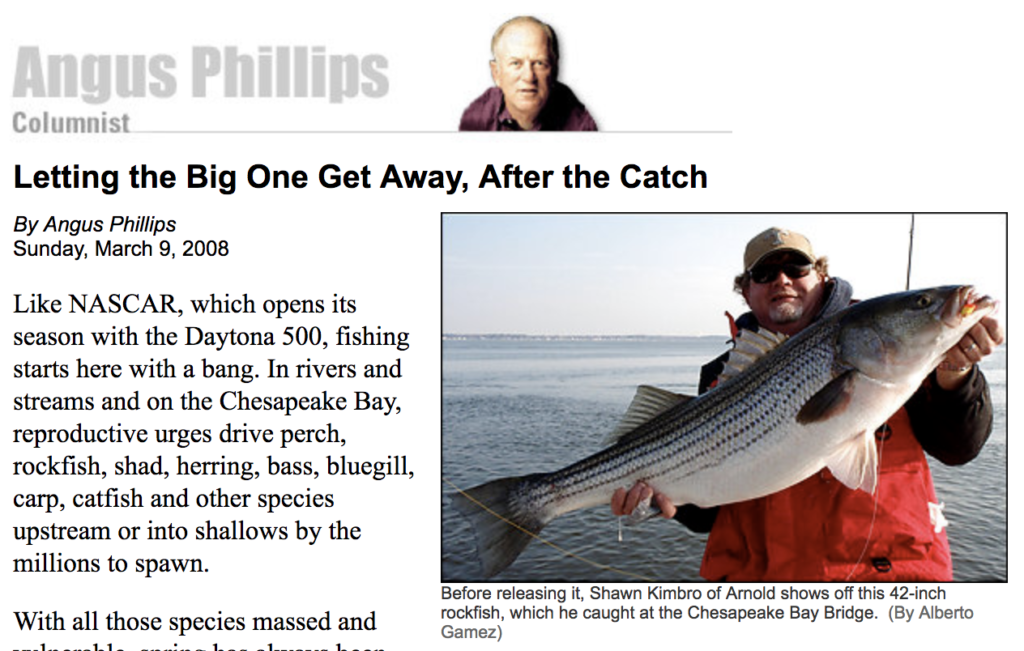 I sat on the design for awhile before I shared it. Since I lived near the mouth of the Magothy River, I spent almost every evening fishing the area I nicknamed Light Tackle University at the Bay Bridge. If you’ve read my books, you know where that is. I caught a lot of small fish but I occasionally picked off a big cow or two. After a few weeks, there was no doubt in my mind that the color combination was a winner. Angus Phillips, who had his finger on the pulse of Chesapeake Bay fishing, outed me in March, 2008 when he published a picture of a fish I caught in the Sunday edition of the Washington Post. Oops, in the big striper’s mouth was a candy corn jig!
I sat on the design for awhile before I shared it. Since I lived near the mouth of the Magothy River, I spent almost every evening fishing the area I nicknamed Light Tackle University at the Bay Bridge. If you’ve read my books, you know where that is. I caught a lot of small fish but I occasionally picked off a big cow or two. After a few weeks, there was no doubt in my mind that the color combination was a winner. Angus Phillips, who had his finger on the pulse of Chesapeake Bay fishing, outed me in March, 2008 when he published a picture of a fish I caught in the Sunday edition of the Washington Post. Oops, in the big striper’s mouth was a candy corn jig!
When the spring thaw arrived in April, 2008 to wash out the warm-water pycnoclines at the Bay Bridge, and it became clear that my fishing there was done, I decided to come clean with the candy corn design. Here’s the post from Tidal Fish when I introduced Candy Corn jigs.
Tidal Fish 4-22-2008: 5 Species & a New Jig Design
So now you know: the “Jedi Lab on the Swamp Planet of Dagobah” (umm, yeah, I was a Star Wars nerd back then, and I still am today) is really Rich’s basement! If you read on down in that report, you’ll see that the first fish caught on a candy corn jig wasn’t a rockfish at all. It was a flounder!
It’s important to note that the candy corn color combination has been around for a long time. In fact, one of my favorite bass-fishing crankbaits of all time, the 1970’s era Rebel Deep Wee-R came in a version with those exact colors. Going farther back , there are wooden lures made as early as the 1920s that are orange, chartreuse, and white. The combination attracts fish for the same reason construction workers wear chartreuse vests when they place orange and white barrels along the highway – it is intensely visible.
Since the good old days of Tidal Fish, things have changed a lot. There are several homegrown companies now that are making beautiful, multi-colored jig heads that take full advantage of the strike-triggers concept. The Chesapeake Angler Board on Tidal Fish has become a caricature of itself and most of the better fishermen have left for Facebook, or Instagram, or some other social media outlet. That’s not necessarily been good for Chesapeake Bay fishing. One of my biggest disappointments with modern social media is the all-too-frequent “me first” attitudes.
Facebook fishing heroes rise and disappear as quickly as middle-school Snapchat selfies in an environment where success is fabricated and a single fish picture, appended with a dozen brand-name hashtags is shared across multiple websites. A lifetime of fishing experience often takes a back-seat to a desk-jockey trying to hashtag his way to success while begging for shares so he can get 5,000 likes. The art of giving and returning credit has all but vanished among those willing to substitute social-media shortcuts for honest-to-goodness fishing experience. There’s nothing I like better than helping out young people with an entrepreneurial spirit, but if I had a dollar for every self-proclaimed expert on Facebook who has touted their trendy techniques without even a nod to the fishermen who came before, I could buy enough lead to pour a lot more candy-corn jigs.
I’ve never made a penny from selling jig heads, but I’m happy to hear that Coach Jenkins is launching a new website to sell his lures including our original candy corn design. In the decade I’ve known Rich, he has become an incredible light tackle angler. In fact, he is the best striped bass fisherman I’ve ever known. To say he knows something about making lures that catch fish is a huge understatement. I wholeheartedly endorse the jig heads he makes because I’ve seen them work for ten years. I hope you’ll give his website a visit, see the big fish his lures have caught, compare his quality, and then look at his reasonable prices. I think you’re gonna like it!




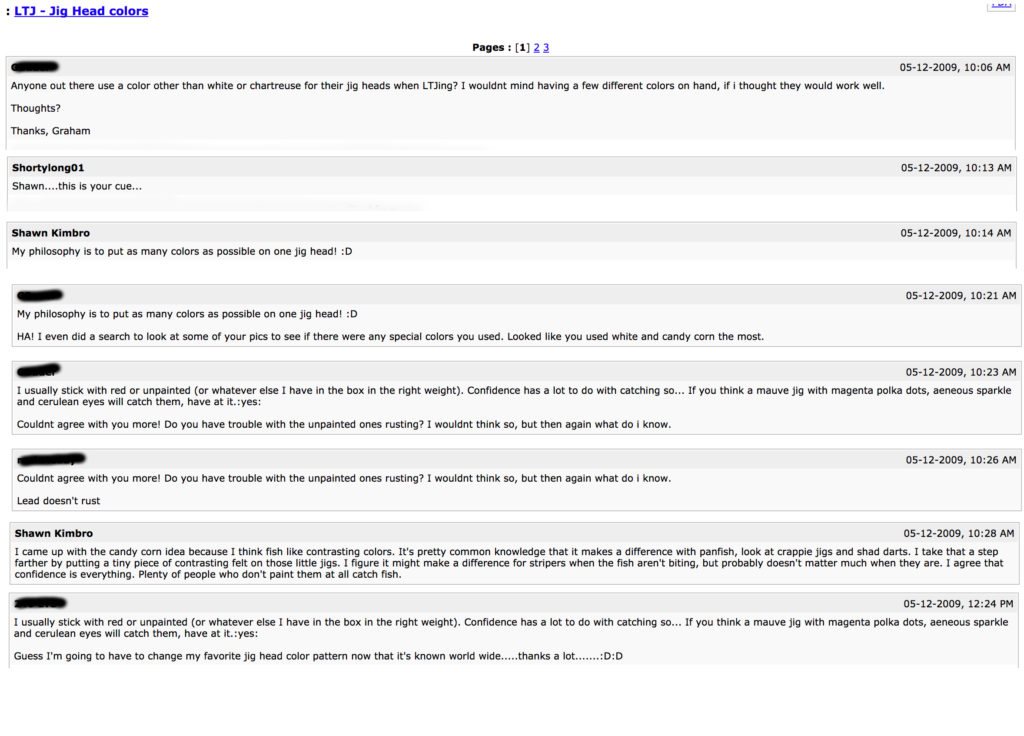
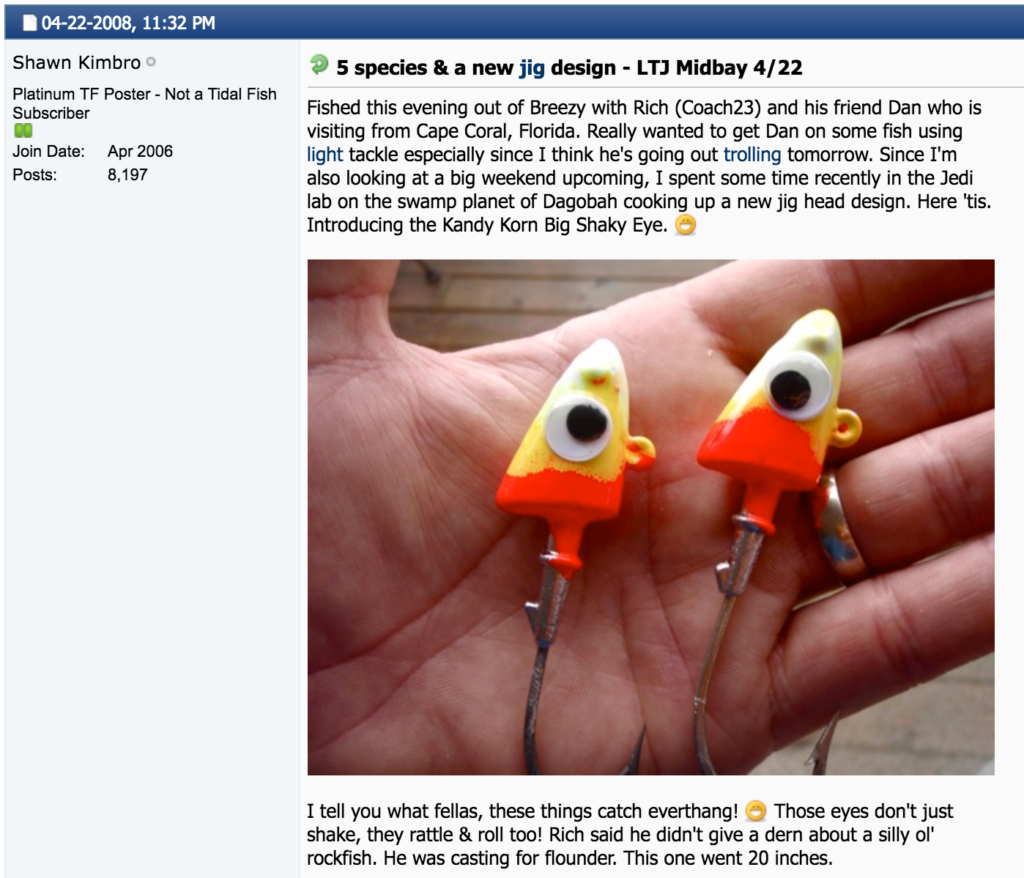
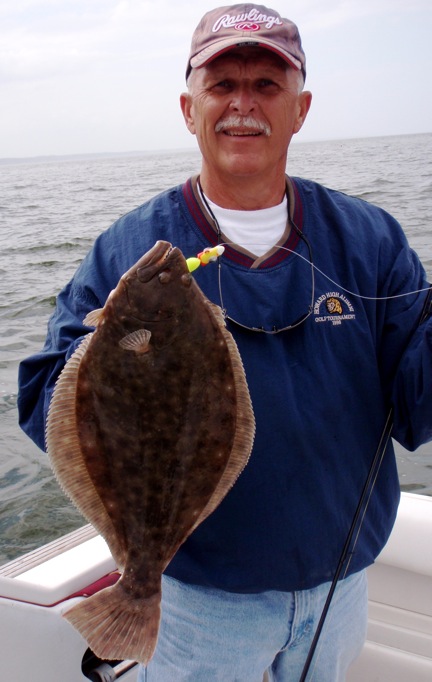
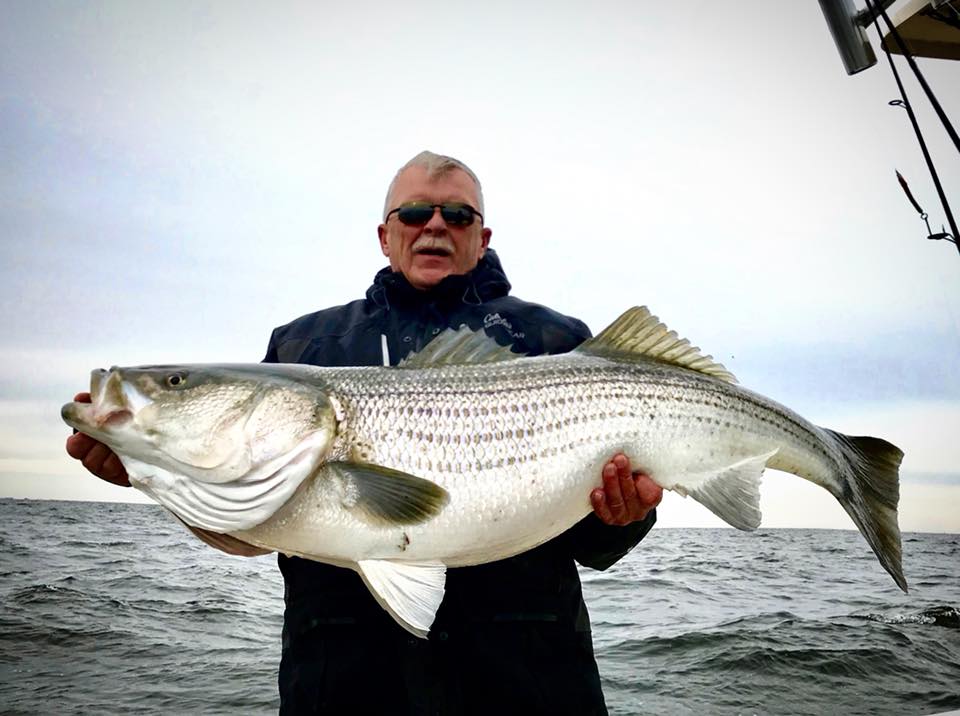
Shawn,
You, Coach, and crew have caught some impressive stripers the last few weeks.
What weight jig do you most often use?
Thanks for providing all this info with your books and reports because whatever you do, life is a continual learning experience.
Happy Holidays, Tom
Hey, Tom. If I had to pick one size, it would be three-quarter ounce, but as you know from reading my books, it’s important to match the weight to the situation. Yes, you are absolutely right, we are always learning!
Neat story. I just looked at Rich’s website and I’m ordering some jigs.
Saturday, May 11, 2019
Shawn,
Please advise me on LTJ line-to-lure connections. I need to be able to change lures without tying and the lures must presented real enough to catch fish.
Given:
Spinning reel and 6 1/2 ft rood equipped with 20 lb braid connected to 18 to 24 inch fluorocarbon leader connected to “clip”* that holds top water lure, or soft plastic, or BKD, or Kastmaster, or bucktail w/ twister, or tail, metal spoon.
*Clip: I have the look alike “paper clip” and the wire top and bottom squeeze wire clip but not sure which is best?
OK to use a tiny barrel swivel between braid and fluorocarbon leader.